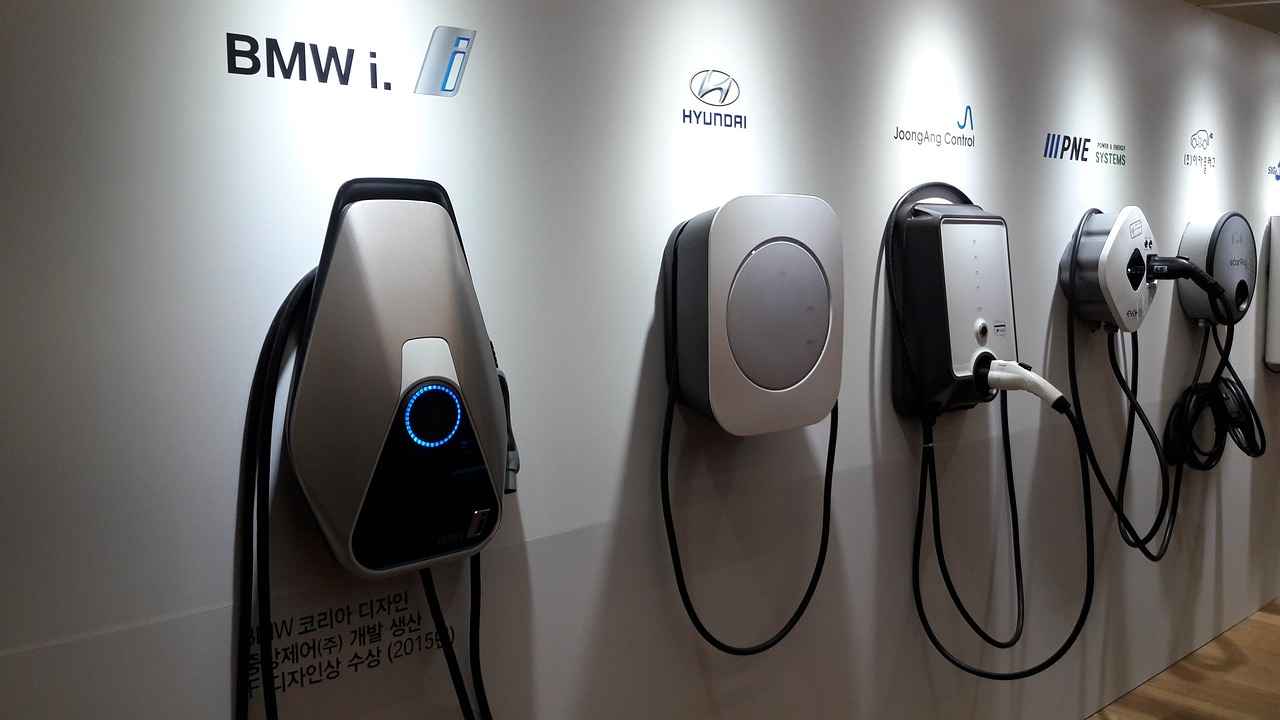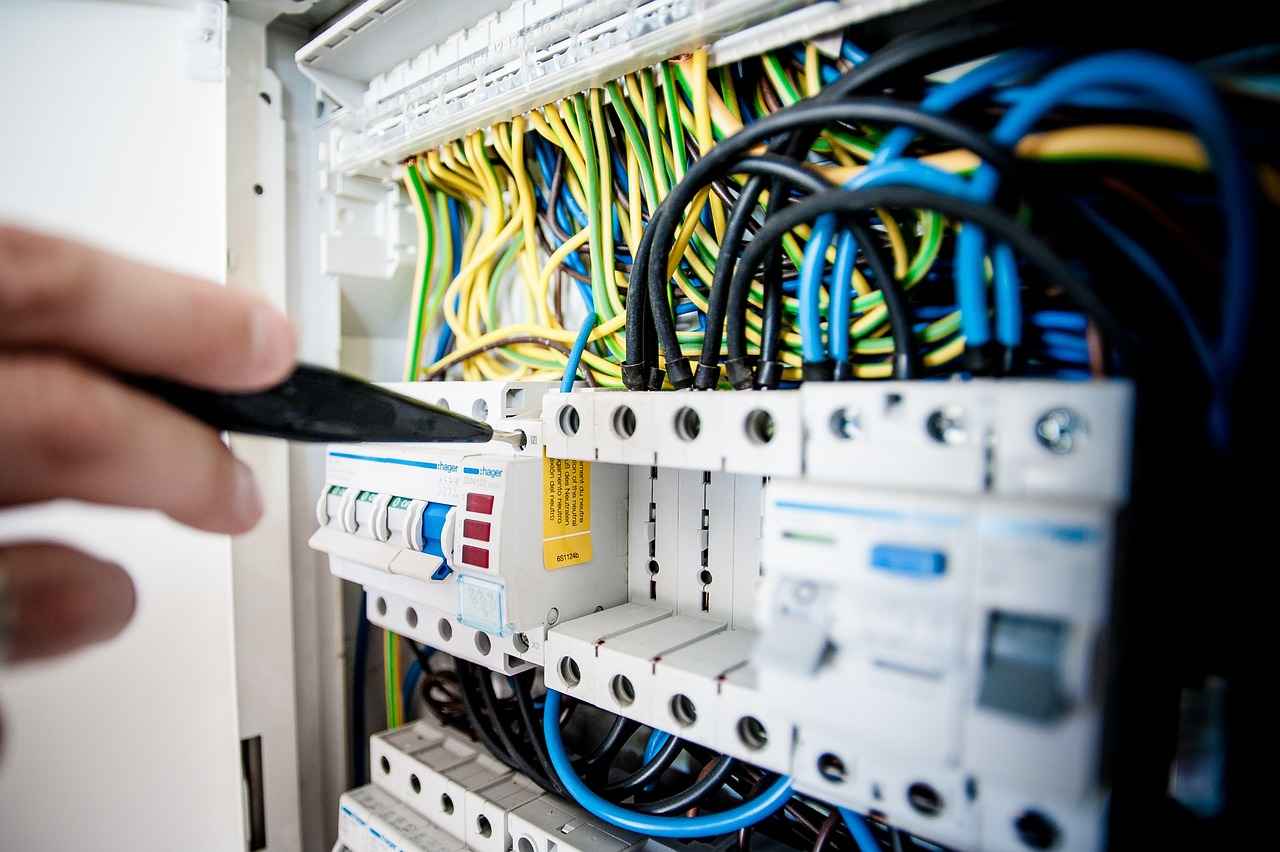This article delves into the numerous environmental advantages of electric bikes, with a focus on their sustainability, reduced carbon footprint, and significant role in promoting eco-friendly transportation solutions. As urban areas grapple with pollution and traffic congestion, electric bikes emerge as a viable alternative for eco-conscious individuals.
1. Understanding Electric Bikes
Electric bikes, commonly known as e-bikes, are bicycles equipped with an electric motor that assists with pedaling. This feature makes them an attractive choice for those looking to reduce their environmental impact while enjoying the benefits of cycling.
2. Reduced Carbon Emissions
Switching to electric bikes can drastically lower greenhouse gas emissions compared to traditional vehicles. This shift contributes to cleaner air and a healthier environment, especially in urban settings.
- 2.1. Comparison with Traditional Vehicles
- 2.2. Emission Statistics
- 2.3. Long-Term Impact
The emissions from electric bikes are significantly lower than those from conventional cars. This stark difference highlights the environmental benefits of adopting e-bikes for daily commutes and errands.
Statistics indicate that e-bikes produce up to 90% fewer emissions than gasoline-powered vehicles, making them a powerful ally in the fight against climate change.
Over time, the widespread adoption of e-bikes can lead to a substantial reduction in overall carbon emissions, positively affecting global warming and air quality.
3. Energy Efficiency of Electric Bikes
Electric bikes are inherently more energy-efficient than traditional vehicles, utilizing less energy per mile traveled. This efficiency underscores their environmental advantages.
- 3.1. Energy Consumption Comparison
- 3.2. Renewable Energy Integration
When analyzing energy consumption, e-bikes require significantly less energy compared to cars, making them a more sustainable choice for transportation.
Electric bikes can be powered by renewable energy sources, enhancing their sustainability and decreasing reliance on fossil fuels.
4. Decreased Traffic Congestion
The increased use of electric bikes can alleviate traffic congestion in urban areas, leading to reduced idling times and lower emissions from vehicles.
- 4.1. Benefits of Reduced Congestion
- 4.2. Promoting Active Lifestyles
Less traffic congestion not only improves air quality but also enhances the overall quality of life in cities, making them more livable and enjoyable.
Electric bikes encourage physical activity and promote healthier lifestyles, contributing to both personal well-being and environmental sustainability.
5. Supporting Local Economies
The rise of electric bikes can boost local economies by promoting bike shops, repair services, and related businesses, leading to job creation and economic growth.
- 5.1. Job Creation in the E-Bike Sector
- 5.2. Economic Benefits for Communities
As the demand for electric bikes increases, so does the need for skilled workers in manufacturing, sales, and maintenance, creating new job opportunities.
Communities that embrace electric bikes can experience economic revitalization, attracting tourism and enhancing local businesses.
6. Conclusion: A Sustainable Future with Electric Bikes
Transitioning to electric bikes represents a significant step towards a more sustainable future. The environmental benefits extend beyond individual users, positively impacting the broader community and the planet.

1. Understanding Electric Bikes
Understanding Electric Bikes is essential for anyone considering a shift towards more sustainable transportation options. Electric bikes, commonly referred to as e-bikes, are bicycles that incorporate an electric motor to assist with pedaling. This innovative feature makes them an increasingly popular choice for eco-conscious consumers seeking alternatives to traditional vehicles.
E-bikes are designed to provide an effortless riding experience, allowing users to travel longer distances with less physical exertion. They come in various styles, catering to different preferences, whether for commuting, leisure, or off-road adventures. The integration of an electric motor not only enhances the riding experience but also significantly reduces the effort required to tackle uphill terrains or long distances.
One of the standout features of electric bikes is their ability to contribute to environmental sustainability. By opting for an e-bike, riders can minimize their reliance on fossil fuels, thus lowering their carbon footprint. This shift is particularly crucial in urban areas, where traffic congestion and air pollution are pressing concerns.
Moreover, e-bikes are often equipped with features such as regenerative braking, which helps conserve energy and extend battery life. This technology not only enhances the bike’s efficiency but also contributes to a more sustainable form of transportation.
| Feature | Benefit |
|---|---|
| Electric Motor | Assists with pedaling, making rides easier and more enjoyable. |
| Energy Efficiency | Uses less energy per mile compared to traditional vehicles. |
| Reduced Emissions | Contributes to cleaner air by decreasing reliance on cars. |
In conclusion, understanding electric bikes reveals their potential as a viable alternative to traditional vehicles. With their numerous benefits, including enhanced energy efficiency and reduced environmental impact, e-bikes are paving the way for a more sustainable future in transportation.

2. Reduced Carbon Emissions
The Environmental Benefits of Switching to an Electric Bike
This article explores the numerous environmental advantages of electric bikes, emphasizing their sustainability, reduced carbon footprint, and role in promoting eco-friendly transportation solutions.
Switching to electric bikes is a transformative choice that significantly lowers greenhouse gas emissions compared to traditional cars. This transition is crucial for fostering cleaner air and a healthier environment, especially in urban areas where pollution levels are often at their highest. By opting for e-bikes, individuals can play a vital role in reducing their carbon footprint and contributing to a more sustainable future.
- Comparison with Traditional Vehicles: Electric bikes emit far fewer pollutants than conventional gasoline-powered vehicles. This stark difference not only highlights the environmental benefits of e-bikes but also underscores the urgent need for a shift in our commuting habits.
- Emission Statistics: Research indicates that e-bikes can produce up to 90% fewer emissions than their gasoline counterparts. This reduction is pivotal in the fight against climate change, making e-bikes a key player in creating a greener planet.
- Long-Term Impact: The widespread adoption of electric bikes can lead to a dramatic decrease in overall carbon emissions over time. This collective effort can significantly mitigate global warming and improve air quality in urban environments.
Urban Air Quality Improvement: The increased use of electric bikes directly contributes to cleaner urban air. By reducing the number of cars on the road, e-bikes help lower the concentration of harmful pollutants, thus enhancing public health and overall quality of life.
In conclusion, the transition to electric bikes is not merely a personal choice; it is a vital step toward a sustainable future. By reducing emissions and improving air quality, e-bikes are paving the way for healthier cities and a cleaner environment.
2.1. Comparison with Traditional Vehicles
When evaluating transportation options, it is essential to recognize the significant differences between electric bikes and traditional vehicles. This comparison not only highlights the advantages of electric bikes but also emphasizes the urgent need for more sustainable transportation choices.
Electric bikes (e-bikes) are emerging as a practical alternative to conventional cars, especially in urban settings. One of the most striking differences lies in their carbon emissions. While traditional vehicles emit a considerable amount of greenhouse gases, e-bikes are designed to operate with minimal environmental impact.
| Aspect | Traditional Vehicles | Electric Bikes |
|---|---|---|
| Carbon Emissions | High | Up to 90% less |
| Energy Consumption | High | Low |
| Traffic Congestion | Contributes to | Reduces |
| Operating Costs | High | Low |
Statistics indicate that e-bikes can produce up to 90% fewer emissions than gasoline-powered vehicles. This stark contrast underscores the environmental benefits of adopting e-bikes for daily commutes and errands. Furthermore, the energy consumption of e-bikes is significantly lower, making them a more sustainable choice.
In addition to their reduced carbon footprint, e-bikes help alleviate traffic congestion by taking cars off the road. This not only leads to improved air quality but also enhances the overall livability of urban areas. By choosing e-bikes over traditional vehicles, individuals contribute to a cleaner environment and a healthier community.
In conclusion, the comparison between electric bikes and traditional vehicles reveals the substantial environmental advantages of e-bikes. With their low emissions and energy efficiency, e-bikes are paving the way for a more sustainable future in transportation.
2.1.1. Emission Statistics
Electric bikes (e-bikes) have emerged as a revolutionary solution in the quest to reduce our carbon footprint and combat climate change. Statistics indicate that these eco-friendly alternatives to gasoline-powered vehicles produce up to 90% fewer emissions, making them a pivotal element in the fight for a cleaner environment. This significant reduction in emissions is not merely a statistic; it represents a tangible shift towards more sustainable transportation methods.
To understand the impact of e-bikes, we must first recognize the scale of emissions produced by traditional vehicles. Gasoline-powered cars are notorious for their high levels of carbon dioxide and other greenhouse gases, which contribute to global warming and air pollution. In contrast, e-bikes operate on electric power, resulting in substantially lower emissions throughout their lifecycle. This shift is particularly crucial in urban areas, where air quality is often compromised by vehicle pollution.
Moreover, the long-term implications of adopting e-bikes are profound. As more individuals choose this mode of transport, the cumulative effect can lead to a significant decrease in overall carbon emissions. This shift not only benefits the climate but also enhances public health by improving air quality. Cleaner air contributes to lower rates of respiratory diseases and other health issues associated with pollution.
In summary, the transition to electric bikes represents a critical step towards a more sustainable future. With the potential to reduce emissions by up to 90%, e-bikes are not just a trend; they are a necessary evolution in our transportation choices. By embracing e-bikes, we can collectively contribute to a healthier planet and foster a cleaner, more sustainable environment for future generations.
2.1.2. Long-Term Impact
Long-Term Impact of E-Bikes on Carbon Emissions
As the world increasingly confronts the challenges of climate change, the transition to electric bikes (e-bikes) emerges as a pivotal solution. Over time, the widespread adoption of e-bikes can lead to a significant reduction in overall carbon emissions. This shift not only addresses global warming but also enhances air quality, particularly in urban areas.
When examining the long-term impact of e-bikes, it is essential to consider the following factors:
- Reduction in Vehicle Usage: E-bikes provide an alternative to cars for short-distance travel. By replacing car trips with e-bike rides, we can drastically decrease the number of vehicles on the road, leading to lower emissions.
- Increased Adoption Rates: As more individuals and communities embrace e-bikes, the cumulative effect on carbon emissions becomes increasingly pronounced. Studies indicate that if e-bike usage doubles, carbon emissions could decrease by up to 50% in urban settings.
- Urban Planning and Infrastructure: Cities that invest in e-bike infrastructure, such as dedicated lanes and parking, encourage more people to choose this eco-friendly transportation method. Enhanced infrastructure not only supports e-bike usage but also promotes a sustainable lifestyle.
Furthermore, e-bikes can be charged using renewable energy sources, such as solar or wind power, which further reduces their carbon footprint. This integration of sustainable energy solutions is crucial for maximizing the environmental benefits of e-bikes.
In conclusion, the long-term impact of adopting electric bikes is multifaceted. By significantly reducing carbon emissions, improving air quality, and promoting sustainable urban living, e-bikes represent a crucial element in the fight against climate change. Their adoption not only benefits individual users but also contributes to a healthier planet for future generations.
2.2. Urban Air Quality Improvement
Urban Air Quality Improvement is a critical aspect of modern environmental discussions, particularly in relation to transportation. Electric bikes (e-bikes) have emerged as a viable solution to combat air pollution in urban areas, significantly contributing to cleaner air.
With the increasing number of vehicles on the road, cities are facing serious air quality challenges. Traditional gasoline-powered vehicles release a plethora of harmful pollutants, including nitrogen oxides and particulate matter, which can severely impact public health. In contrast, e-bikes offer a cleaner alternative by producing zero tailpipe emissions. This transition from cars to e-bikes can lead to a substantial reduction in overall vehicle emissions.
- Reduction in Vehicle Numbers: E-bikes help decrease the number of cars on the road. As more people opt for e-bikes for their daily commutes, the overall traffic volume diminishes, leading to less congestion and lower emissions.
- Improved Public Health: Cleaner air translates to better health outcomes for urban residents. Reduced air pollution is linked to lower rates of respiratory diseases, cardiovascular issues, and other health problems.
- Encouraging Sustainable Practices: The adoption of e-bikes promotes a culture of sustainability, encouraging cities to invest in bike lanes and infrastructure that supports eco-friendly transportation.
In addition to direct air quality benefits, e-bikes also contribute to a more vibrant urban environment. With fewer cars, streets can be transformed into pedestrian-friendly spaces, enhancing the overall quality of life. Parks and recreational areas become more accessible, and communities can thrive with reduced noise pollution.
In conclusion, the integration of electric bikes into urban transportation systems is a pivotal step toward improving air quality and fostering healthier communities. By reducing the reliance on traditional vehicles, cities can not only enhance air quality but also promote a more sustainable and livable environment for all residents.

3. Energy Efficiency of Electric Bikes
The Environmental Benefits of Switching to an Electric Bike
This article explores the numerous environmental advantages of electric bikes, emphasizing their sustainability, reduced carbon footprint, and role in promoting eco-friendly transportation solutions.
1. Understanding Electric Bikes
Electric bikes, or e-bikes, are bicycles equipped with an electric motor that assists with pedaling, making them an appealing alternative to traditional vehicles for eco-conscious consumers.
2. Reduced Carbon Emissions
Switching to electric bikes significantly lowers greenhouse gas emissions compared to cars, contributing to cleaner air and a healthier environment for urban populations.
E-bikes stand out for their energy efficiency. They utilize less energy per mile traveled compared to traditional vehicles, which not only highlights their environmental advantages but also makes them a practical choice for modern commuting.
- 3.1. Energy Consumption Comparison
- 3.2. Renewable Energy Integration
When analyzing energy consumption, e-bikes require approximately one-fifth of the energy used by cars over the same distance. This remarkable efficiency means that for every mile traveled, e-bikes consume significantly less energy, making them a more sustainable choice for transportation.
Another advantage of electric bikes is their compatibility with renewable energy sources. E-bikes can be charged using solar or wind energy, further enhancing their sustainability and reducing reliance on fossil fuels. This integration not only decreases the overall carbon footprint but also promotes the use of clean energy in everyday transportation.
4. Conclusion
In summary, the energy efficiency of electric bikes plays a crucial role in their environmental benefits. By using less energy per mile and integrating renewable energy sources, e-bikes not only contribute to a reduction in greenhouse gas emissions but also pave the way for a more sustainable future in urban transportation.
3.1. Energy Consumption Comparison
The Environmental Benefits of Switching to an Electric BikeThis article explores the numerous environmental advantages of electric bikes, emphasizing their sustainability, reduced carbon footprint, and role in promoting eco-friendly transportation solutions.
1. Understanding Electric Bikes
Electric bikes, or e-bikes, are bicycles equipped with an electric motor that assists with pedaling, making them an appealing alternative to traditional vehicles for eco-conscious consumers.
2. Reduced Carbon Emissions
Switching to electric bikes significantly lowers greenhouse gas emissions compared to cars, contributing to cleaner air and a healthier environment for urban populations.
3. Energy Efficiency of Electric Bikes
E-bikes are more energy-efficient than traditional vehicles, using less energy per mile traveled, which further underscores their environmental advantages.
When analyzing energy consumption, e-bikes require significantly less energy compared to cars, making them a more sustainable choice for transportation. For instance, while a typical car consumes around 0.29 kWh per mile, an electric bike averages only about 0.01 to 0.03 kWh per mile. This stark contrast highlights the efficiency of e-bikes in energy usage.
- Lower Energy Demand: E-bikes draw power from batteries that are often charged using renewable energy sources, further reducing their carbon footprint.
- Cost-Effectiveness: The lower energy consumption translates to reduced electricity costs for users, making e-bikes an economical choice for daily commuting.
- Environmental Impact: The minimal energy requirement of e-bikes contributes to a decrease in overall energy consumption, supporting global efforts to combat climate change.
3.2. Renewable Energy Integration
Electric bikes can be powered by renewable energy sources, enhancing their sustainability and decreasing reliance on fossil fuels.
4. Conclusion: A Sustainable Future with Electric Bikes
Transitioning to electric bikes represents a significant step towards a more sustainable future, offering environmental benefits that extend beyond individual users to the broader community and planet.
3.2. Renewable Energy Integration
Electric bikes, commonly referred to as e-bikes, represent a significant advancement in sustainable transportation. One of the most compelling aspects of e-bikes is their ability to be powered by renewable energy sources, which enhances their sustainability and drastically reduces reliance on fossil fuels.
By utilizing solar, wind, or hydroelectric power, e-bikes can operate with minimal environmental impact. This integration of renewable energy not only contributes to a decrease in greenhouse gas emissions but also promotes a circular economy where energy is sourced sustainably.
| Renewable Energy Source | Benefits |
|---|---|
| Solar Power | Abundant and accessible; can be harnessed through solar panels installed on homes or charging stations. |
| Wind Energy | Clean energy source that can be generated in areas with consistent wind patterns, reducing dependency on non-renewable sources. |
| Hydroelectric Power | Utilizes flowing water to generate electricity, providing a reliable energy source for e-bike charging stations. |
Moreover, the adoption of e-bikes powered by renewable energy can significantly reduce the carbon footprint associated with personal transportation. For instance, studies indicate that e-bikes can produce up to 90% fewer emissions compared to traditional gasoline-powered vehicles. This shift not only benefits the environment but also aligns with global efforts to combat climate change.
In addition to environmental benefits, the use of renewable energy for e-bikes also promotes energy independence. As more individuals and communities adopt this mode of transportation, the demand for fossil fuels decreases, paving the way for a cleaner, more sustainable future.
In conclusion, integrating renewable energy sources into the operation of electric bikes not only enhances their sustainability but also plays a crucial role in reducing our reliance on fossil fuels. This transition is vital for fostering a healthier planet and promoting eco-friendly transportation solutions.

4. Decreased Traffic Congestion
The Decreased Traffic Congestion section highlights the significant impact of electric bikes on urban traffic patterns, particularly in congested areas. As cities continue to grow, the challenge of traffic congestion becomes increasingly pressing. Electric bikes, or e-bikes, offer a practical solution to this issue, promoting a more fluid and efficient transportation system.
Electric bikes are designed to complement traditional cycling by providing an electric motor that assists with pedaling. This feature makes e-bikes accessible to a wider range of individuals, including those who may find regular cycling challenging. The increased adoption of e-bikes can lead to fewer cars on the road, which directly contributes to alleviating traffic congestion.
- Improved Air Quality: With fewer vehicles idling in traffic, emissions from cars are significantly reduced. This leads to better air quality in urban environments, benefiting public health.
- Enhanced Urban Mobility: E-bikes allow for quicker travel times, reducing the time spent in traffic. This efficiency encourages more individuals to opt for cycling over driving.
- Lower Stress Levels: Commuters often experience stress due to traffic jams. By reducing congestion, e-bikes contribute to a more relaxed commuting experience.
In addition to reducing congestion, e-bikes promote physical activity. As more people choose e-bikes for their daily commutes, they engage in regular exercise, which can lead to improved health outcomes. This shift not only benefits individuals but also fosters a culture of active transportation within communities.
The transition to electric bikes represents a critical step toward sustainable urban living. By alleviating traffic congestion, e-bikes contribute to cleaner air, improved public health, and a more enjoyable urban experience. As cities embrace this mode of transportation, the benefits will extend far beyond individual users, fostering a healthier environment for all.
4.1. Benefits of Reduced Congestion
In urban environments, traffic congestion has become a pressing issue, affecting the daily lives of millions. As cities grow and populations increase, the roads become more crowded, leading to a myriad of problems. One of the most significant benefits of reducing this congestion is the improvement in air quality. With fewer vehicles on the road, there are lower levels of harmful emissions, which can lead to a healthier atmosphere for everyone.
Moreover, less traffic congestion leads to enhanced quality of life in cities. Commuters experience shorter travel times, reducing the stress associated with long hours spent in traffic. This improvement can foster a more pleasant urban experience, encouraging people to spend more time outdoors, engaging in community activities, and enjoying local amenities.
Additionally, reducing congestion promotes the use of alternative transportation methods, such as electric bikes, walking, or public transit. This shift not only decreases the number of cars on the road but also encourages a more active lifestyle among residents. With the rise of electric bikes, more individuals are opting for this eco-friendly mode of transport, which contributes to both personal health and environmental sustainability.
Furthermore, the economic benefits of decreased congestion cannot be overlooked. Businesses can flourish in areas where traffic flows smoothly, as customers can access services more easily. This can lead to increased revenue for local shops and restaurants, ultimately boosting the local economy.
In conclusion, tackling traffic congestion is crucial for creating more livable and enjoyable cities. The benefits extend beyond just improved air quality; they encompass a better quality of life, enhanced community engagement, and stronger economic growth. As urban areas continue to evolve, prioritizing solutions that reduce congestion will be vital for sustainable development.
4.2. Promoting Active Lifestyles
Promoting Active Lifestyles
Electric bikes, or e-bikes, are not just a mode of transportation; they are a catalyst for active lifestyles. By encouraging more individuals to cycle, e-bikes offer a unique blend of convenience and exercise, making physical activity more accessible and enjoyable for everyone.
One of the primary benefits of e-bikes is their ability to reduce barriers to cycling. For many, the thought of cycling long distances or tackling steep hills can be daunting. However, with the assistance of an electric motor, riders can easily navigate challenging terrains without feeling overwhelmed. This feature makes cycling a viable option for a broader demographic, including those who may have previously considered cycling too strenuous.
- Enhanced Accessibility: E-bikes allow individuals of varying fitness levels to participate in cycling. Whether you are a seasoned cyclist or a beginner, e-bikes provide the necessary support to make cycling enjoyable.
- Encouragement of Regular Exercise: The ease of using an e-bike can motivate users to incorporate cycling into their daily routines, such as commuting to work or running errands, effectively increasing their overall physical activity.
- Social Engagement: Riding e-bikes can also foster social interactions. Group rides and community events centered around e-biking can encourage individuals to connect with others, promoting a sense of community and shared experiences.
Furthermore, studies indicate that individuals who cycle regularly, even with the help of an electric motor, report higher levels of mental well-being. The combination of physical activity and fresh air contributes to improved mood and reduced stress levels.
In conclusion, electric bikes serve as a powerful tool in promoting active lifestyles. By making cycling more accessible and enjoyable, they not only enhance personal well-being but also contribute to a more sustainable environment. As more people embrace e-bikes, we can expect to see a positive shift towards healthier living and a greener planet.

5. Supporting Local Economies
The rise of electric bikes is not just a trend; it represents a significant shift towards sustainable transportation that can have a profound impact on local economies. As more individuals opt for electric bikes over traditional vehicles, a ripple effect is created that stimulates various sectors within the community.
- Boosting Local Bike Shops: The increasing popularity of electric bikes leads to a surge in demand for specialized bike shops. These stores not only sell e-bikes but also provide essential accessories and equipment, fostering local entrepreneurship.
- Repair Services: With more electric bikes on the road, the need for repair and maintenance services grows. This creates job opportunities for skilled technicians and mechanics, contributing to the local job market.
- Related Businesses: The rise of e-bikes can also benefit related businesses, such as cafes, fitness centers, and tourism companies that cater to cyclists. These establishments can attract more customers by offering bike-friendly services and amenities.
The economic impact extends beyond just bike shops and repair services. Job creation in the e-bike sector is significant, as manufacturers and retailers require a workforce to meet the growing demand. This includes roles in sales, marketing, and logistics, further diversifying the local economy.
Moreover, communities that embrace electric bikes often experience economic revitalization. Increased cycling can attract tourists and promote local events, enhancing visibility for small businesses. As e-bike usage grows, so does the potential for community engagement and collaboration among local businesses, creating a thriving economic ecosystem.
In conclusion, the rise of electric bikes not only supports environmental sustainability but also serves as a catalyst for local economic growth. By fostering job creation and enhancing community engagement, e-bikes pave the way for a more prosperous and interconnected local economy.
5.1. Job Creation in the E-Bike Sector
Job Creation in the E-Bike Sector
As the popularity of electric bikes continues to surge, the demand for skilled workers in various sectors related to e-bikes is also on the rise. This shift not only contributes to environmental sustainability but also opens up new job opportunities in manufacturing, sales, and maintenance. The following sections delve into the different aspects of job creation within the e-bike industry.
| Sector | Job Opportunities |
|---|---|
| Manufacturing | Assembly line workers, quality control specialists, and engineers |
| Sales | Sales representatives, customer service agents, and marketing professionals |
| Maintenance | Bicycle mechanics, technicians, and service managers |
1. Manufacturing Sector
The manufacturing of electric bikes requires a variety of skilled positions. From assembly line workers who put together the bikes to engineers who design innovative models, this sector is crucial for meeting the growing demand. As companies expand their production capabilities, they will require a workforce that is not only skilled but also knowledgeable about the latest technologies in electric mobility.
2. Sales and Marketing
As e-bikes become more mainstream, the need for sales professionals who understand the benefits of these bikes is increasing. Sales representatives play a vital role in educating consumers about electric bikes and driving sales. Additionally, marketing teams are essential for promoting e-bikes and reaching potential customers through various channels.
3. Maintenance and Repair
With more electric bikes on the road, the demand for maintenance and repair services is expected to grow. Skilled bicycle mechanics will be needed to ensure that e-bikes are properly serviced and maintained, providing a reliable transportation option for users. This sector not only creates jobs but also encourages a culture of sustainability and responsible ownership.
Conclusion
The rise of electric bikes is significantly impacting the job market by creating diverse opportunities across various sectors. As this industry continues to grow, it will foster economic development and contribute to a more sustainable future.
5.2. Economic Benefits for Communities
Economic Benefits for Communities
Communities that embrace electric bikes can experience significant economic revitalization. By integrating e-bikes into their transportation systems, towns and cities can attract tourism while simultaneously enhancing local businesses. This shift not only supports existing enterprises but also fosters the emergence of new ventures focused on e-bike services.
One of the primary economic advantages of adopting electric bikes is the increase in tourism. Many travelers are now seeking eco-friendly options for exploring new destinations. By promoting e-bike rentals and guided tours, communities can cater to this growing market. Tourists are often drawn to areas that offer unique experiences, and e-biking allows them to discover local attractions at their own pace, generating income for local shops, restaurants, and attractions.
Moreover, the rise of electric bikes stimulates the local economy by creating jobs. New businesses, such as bike shops, repair services, and e-bike rental companies, emerge to meet the demand for these vehicles. This job creation not only provides employment opportunities but also contributes to the overall economic growth of the area.
In addition to job creation, e-bike initiatives can lead to increased spending within the community. As more people choose electric bikes for their daily commutes or recreational activities, they are likely to spend more on local goods and services. This increased foot traffic benefits local businesses, helping them thrive in a competitive market.
Furthermore, local governments can benefit from reduced infrastructure costs. With fewer cars on the road, the wear and tear on roads decreases, leading to lower maintenance expenses. This allows municipalities to allocate funds to other essential services, further enhancing the quality of life for residents.
In conclusion, embracing electric bikes can serve as a catalyst for economic revitalization in communities. By attracting tourism, creating jobs, and supporting local businesses, e-bikes not only provide a sustainable transportation option but also contribute to the overall economic health of an area.

6. Conclusion: A Sustainable Future with Electric Bikes
Transitioning to electric bikes is not merely a trend; it signifies a transformative shift towards a more sustainable future. As urban areas grapple with pollution and traffic congestion, electric bikes emerge as a viable solution that offers numerous environmental benefits extending beyond individual users to the broader community and the planet.
Electric bikes, or e-bikes, serve as an eco-friendly alternative to traditional vehicles. By utilizing an electric motor to assist with pedaling, they significantly reduce the need for gasoline-powered transportation. This shift not only lowers carbon emissions but also enhances air quality, contributing to a healthier environment for all.
- Lower Greenhouse Gas Emissions: E-bikes produce up to 90% fewer emissions than conventional cars, making them a critical tool in the fight against climate change.
- Improved Urban Air Quality: Fewer cars on the road lead to a substantial decrease in air pollutants, promoting public health.
- Energy Efficiency: E-bikes consume significantly less energy per mile compared to traditional vehicles, highlighting their role in sustainable transportation.
Moreover, the increased adoption of electric bikes can lead to reduced traffic congestion in urban areas. This alleviation not only improves air quality but also enhances the overall quality of life in cities, making them more livable and enjoyable. Additionally, e-bikes promote active lifestyles, encouraging physical activity among users.
From an economic perspective, the rise of electric bikes supports local economies by creating jobs in bike shops, repair services, and related industries. As demand for e-bikes grows, communities can experience economic revitalization, attracting tourism and enhancing local businesses.
In conclusion, embracing electric bikes represents a significant step towards a sustainable future. The environmental benefits of this transition extend far beyond the individual, positively impacting communities and the planet as a whole. By choosing e-bikes, we contribute to a cleaner, healthier, and more sustainable world.
Frequently Asked Questions
- What are the main environmental benefits of electric bikes?
Electric bikes significantly reduce carbon emissions, improve urban air quality, and promote energy efficiency. By replacing traditional vehicles, e-bikes contribute to a cleaner environment and help combat climate change.
- How do electric bikes compare to traditional vehicles in terms of emissions?
Electric bikes produce up to 90% fewer emissions than gasoline-powered cars. This stark difference makes e-bikes a powerful tool in reducing greenhouse gases and enhancing air quality.
- Can electric bikes be powered by renewable energy sources?
Absolutely! Electric bikes can be charged using renewable energy, such as solar or wind power, further decreasing their environmental impact and reliance on fossil fuels.
- How do electric bikes help with traffic congestion?
By encouraging more people to use e-bikes instead of cars, we can reduce the number of vehicles on the road. This leads to less traffic congestion, shorter commute times, and lower emissions from idling vehicles.
- What economic benefits do electric bikes bring to communities?
The rise of electric bikes can boost local economies by creating jobs in bike shops, manufacturing, and maintenance services. Additionally, they attract tourism and enhance local businesses, leading to economic growth.














